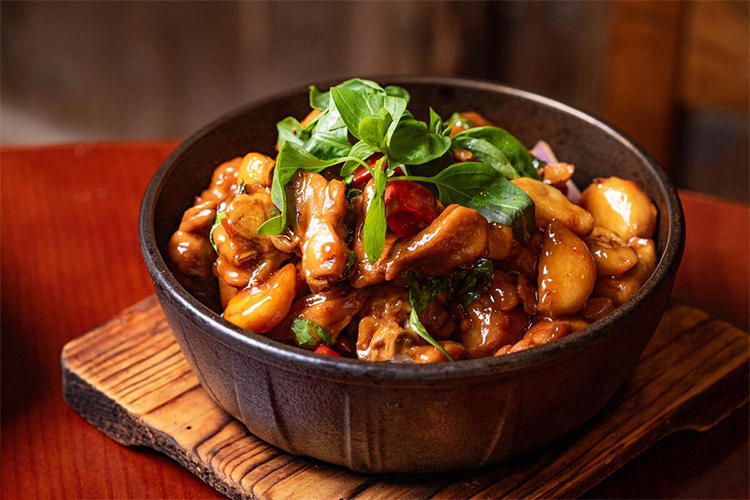Taiwanese Cuisine: Three-Cup Chicken — A Traveler’s Guide
Taste Taiwan: Three-Cup Chicken Guide
1.Discovering Taiwan: A Must-Try Classic — Three-Cup Chicken
Imagine a rich soy-and-oil glaze mingling with the bright, peppery aroma of basil, dark chicken pieces sizzling in the pan, steam carrying that irresistible scent to your table. This is Three-Cup Chicken — a cornerstone of Taiwanese cuisine and a can’t-miss dish for travelers. More than a recipe, it’s a culinary story that crossed the strait, evolved on the island, and became a comfort-food icon in restaurants, night markets, and family kitchens across Taiwan.
2.Across the Sea: Origins and Evolution
The tale of Three-Cup Chicken begins in Jiangxi province, China. Legend links it to the patriotic hero Wen Tianxiang, when a simple, nourishing chicken cooked with limited ingredients was offered during hard times. Early immigrants brought the idea to Taiwan, where local cooks adapted it. They swapped pork lard for aromatic black sesame oil, embraced the island’s abundant local basil (known as jiucengta or Taiwanese basil), and fine-tuned the balance of soy and rice wine. These adjustments made the dish distinctly Taiwanese and turned Three-Cup Chicken into a signature of Taiwan’s culinary identity.

3.The Sauce Philosophy and the Aroma Bomb
The name “Three-Cup” refers to a guiding ratio rather than strict measurements: one cup soy, one cup sesame oil, one cup rice wine — a flavor philosophy passed down through generations.
– One cup soy sauce: often a mix of thick sweet soy and lighter soy to give a glossy, savory base.
– One cup sesame oil: Taiwanese black sesame oil is prized for its deep, nutty aroma; it’s used to bloom ginger and garlic, lending the dish its soulful scent.
– One cup rice wine: Taiwanese rice wine cleanses the meat’s aroma, adds sweetness, and rounds out the sauce.
The real aroma bomb is Taiwanese basil (jiucengta). Added at the very end and briefly tossed, it instantly releases an intense herbal fragrance that distinguishes Taiwan’s version. Bone-in chicken thighs or wings are preferred; they stay moist during simmering and soak up the rich sauce.
4.A Pan-Sizzling Cooking Symphony
Understanding the method enriches the tasting experience. Authentic Three-Cup Chicken is typically cooked in one pot with careful heat control.
Start with black sesame oil in a claypot or heavy skillet. Over low heat, gently fry thick slices of ginger until edges curl and the fragrance blooms. Add garlic and chili to quicken the aroma, then increase the heat to sear the chicken pieces until golden—this locks in juices. Pour rice wine in along the pot’s edge; the steam removes any raw odor. Add soy sauce and a touch of rock or brown sugar for balance.
Reduce to medium-low and braise until the sauce reduces and thickens, allowing the chicken to absorb the flavors. Just before serving, toss in a generous handful of fresh Taiwanese basil, cover briefly to wilt the leaves, then uncover and give everything a quick, high-heat stir. The result: glossy, fragrant chicken and a kitchen filled with an almost addictive smell.

5.Flavor, Texture, and How to Eat It
When the dish arrives, its bold aroma is the first confession of flavor. On the palate, soy’s umami and the subtle sweetness of sugar or rice wine open the scene; the sesame oil follows with a warm, nutty finish. The chicken, often served on the bone, is tender yet pleasantly chewy, each bite soaked in sauce. Crisped ginger pieces occasionally add a surprising, delightful crunch.
The ideal companion is plain steamed jasmine rice. Spoon sauce over rice and you’ll see why locals call Three-Cup Chicken a “rice magnet” — the rich sauce elevates every grain.
6.Where to Taste It and How to Recreate at Home
Where to try it:
– Traditional Taiwanese restaurants: Look for established places that focus on classic dishes; they usually serve the most balanced Three-Cup Chicken.
– Night markets: Taipei’s Shilin Night Market, Taichung’s Fengjia Night Market, and others often have vendors selling small portions — perfect for sampling while strolling.
– Local eateries: Small wok-style restaurants and family-run spots frequently offer versions with strong wok flavor and family-style authenticity.

Simple home-cook version:
– Ingredients: chicken wings or boneless thighs, fresh Taiwanese basil (or sweet basil), ginger, garlic, soy sauce, sesame oil, rice wine, and a little sugar.
– Ratio tip: follow the 1:1:1 guideline for rice wine, soy sauce, and sesame oil (about 50ml each) but use sesame oil sparingly at first to bloom aromatics, then add more later if desired.
– Method: use a nonstick skillet if you don’t have a claypot. Sear chicken, add mixed sauce, simmer until reduced, then stir in basil off heat to preserve its fresh aroma.
This simplified approach produces a satisfying, homey version reminiscent of the night-market favorite.

7.Closing Bite: Rice Bowl, Heartfelt Flavor
Three-Cup Chicken is simple in its cups but complex in its meaning — a dish rooted in history, transformed by Taiwan’s ingredients and tastes. Its sauce is soulful, basil surprising, and pairing with rice irresistible. When planning your Taiwan trip, add this dish to your must-eat list: in a bustling night market or a quiet home kitchen, Three-Cup Chicken is one of the most direct and delicious ways to taste Taiwan.


